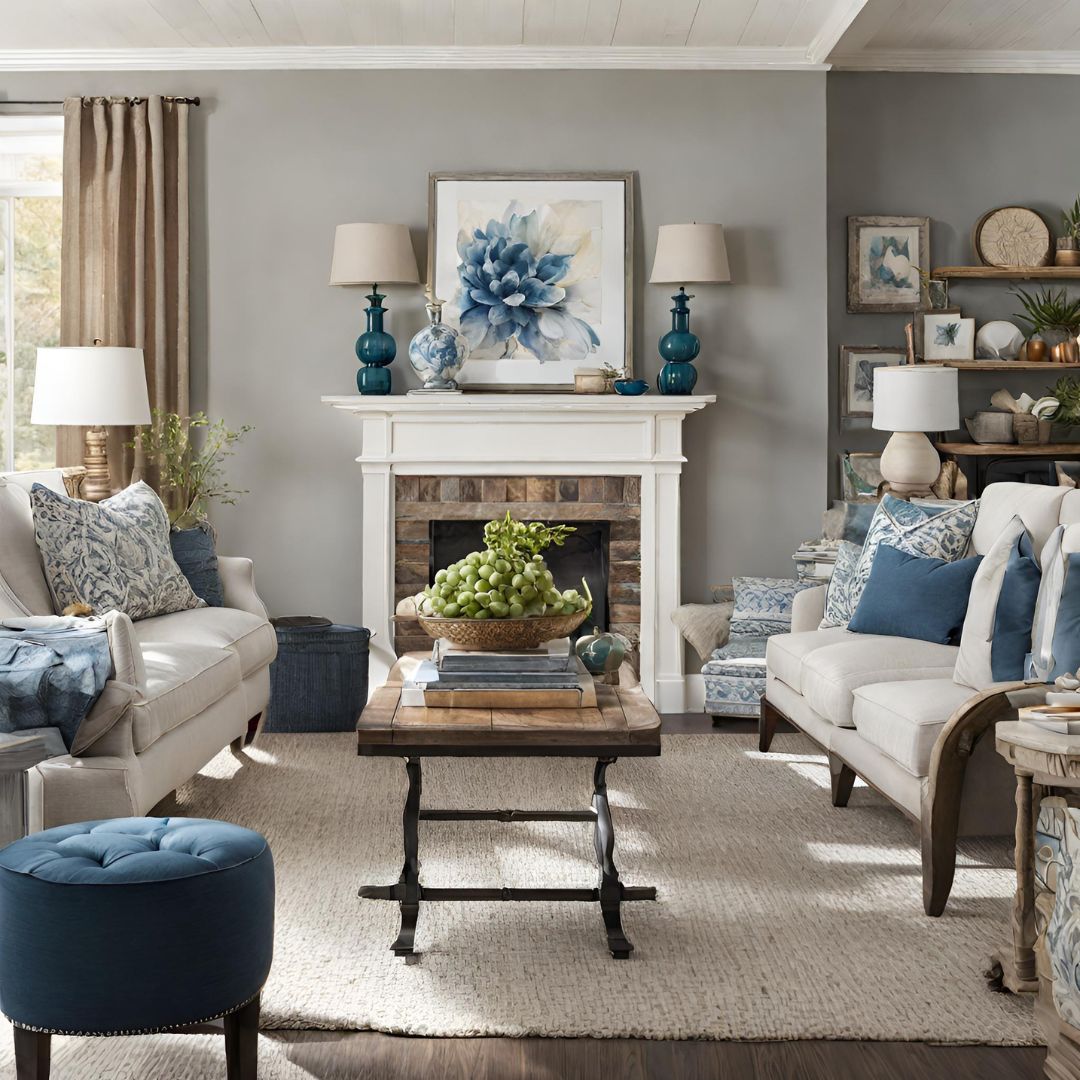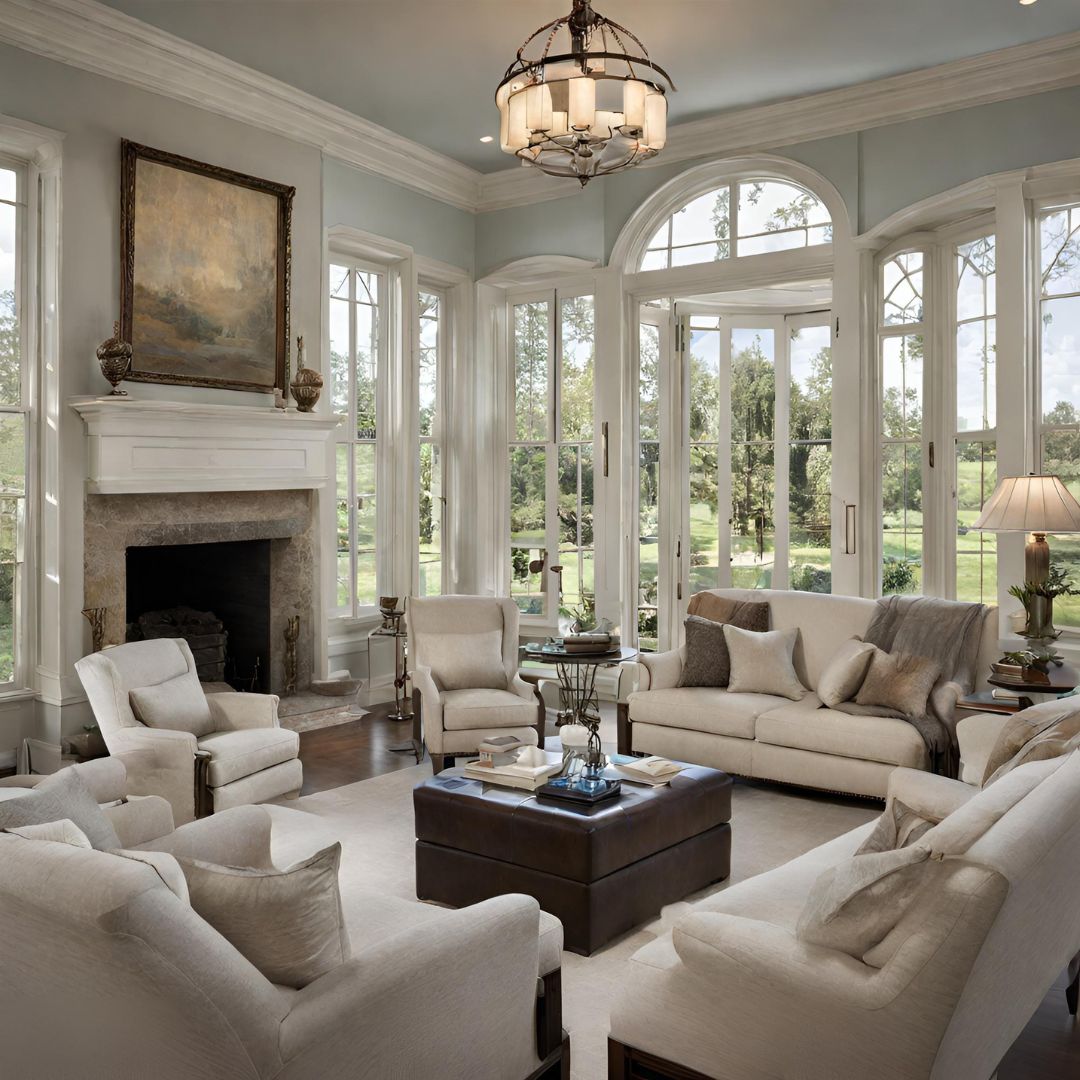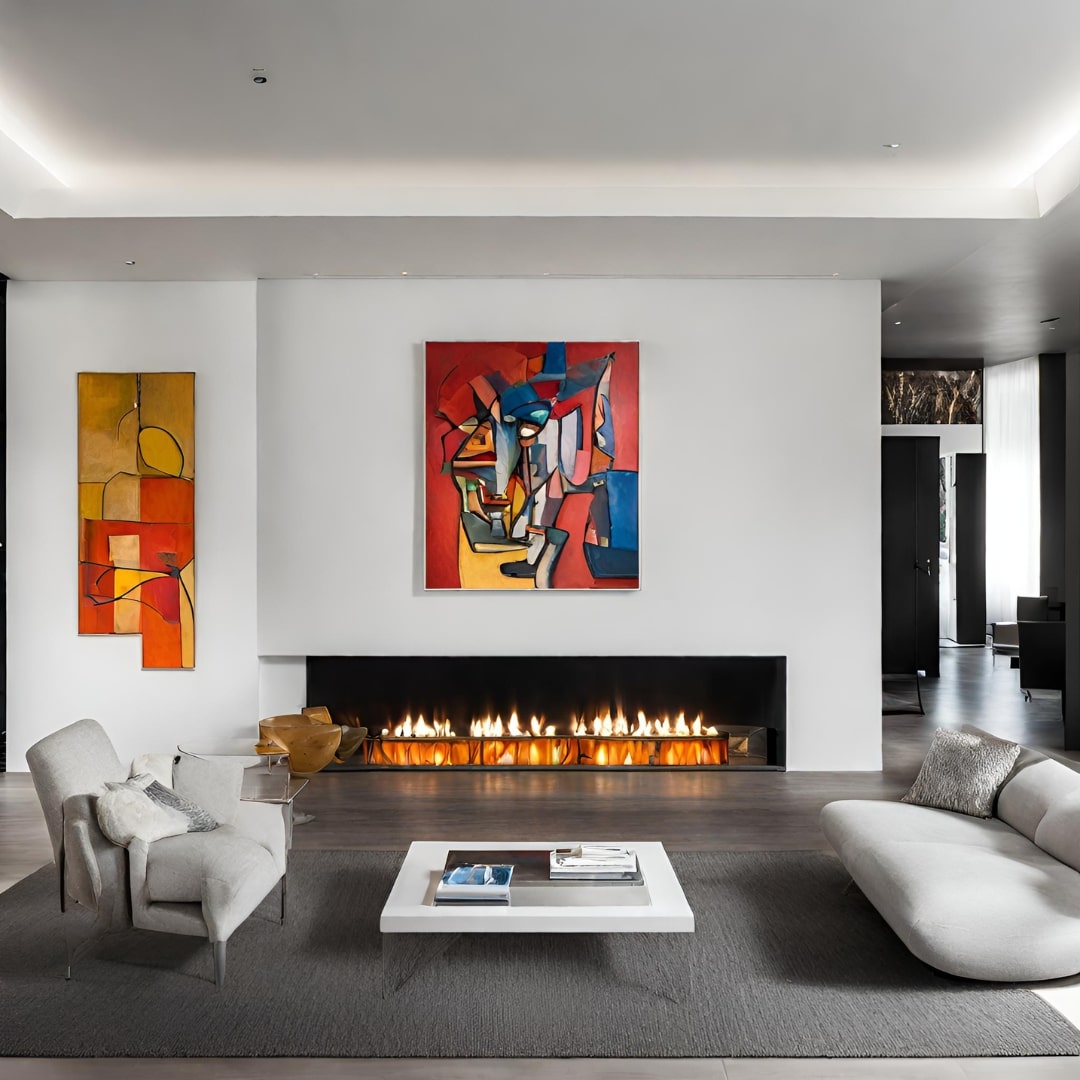Interior Paint : Guide to Choosing the Best Paints for Your Home
Choosing the perfect paint for your home’s interior can be a daunting task, given the multitude of shades, finishes, and brands available on the market. This blog aims to simplify that decision-making process. Welcome to "Interior Paint: A Comprehensive Guide to Choosing the Finest Paints for Your Home", where we will delve into the nuances of interior paint selection. From understanding color psychology to exploring different paint finishes, we will equip you with the knowledge you need to transform your living spaces into truly personal and aesthetically pleasing environments. Stay tuned as we help you navigate this colorful journey to a vibrant and inviting home.
Why Choose Interior Paints for Interior Painting
Interior paint is specially formulated to cater to the unique needs of indoor spaces. It is designed to withstand a lower level of wear and tear compared to its exterior counterpart, offering a smooth, long-lasting finish that is more resistant to scrubbing, making it ideal for high-traffic areas of your home.
One of the primary reasons to choose interior paints over exterior paints for indoor spaces lies in their chemical composition. Interior paints have a balance of ingredients that are optimized for indoor environments. They emit less Volatile Organic Compounds (VOCs), hence, they are less odorous and more environmentally friendly. On the other hand, exterior paints are formulated to resist harsh weather conditions and contain additives that protect against the growth of mold and fungi, which can be unnecessary and potentially harmful in an indoor setting.
Therefore, when painting your home's interior, it's essential to choose an interior paint that not only complements your design scheme but also aligns with the physical demands of indoor spaces, ensuring the paint's longevity and your home's health and safety.
Oil-based Interior Paint vs. Acrylic (Latex) Interior Paint
When it comes to selecting interior paints, you're likely to encounter two major types: oil-based and acrylic (commonly referred to as latex-based). Oil-based paint is known for its superior sealing abilities and smooth, glossy finish. It has excellent adhesion properties, meaning it can stick to almost any surface and provides a durable layer that is resistant to chipping. However, it takes longer to dry, has a more potent odor and is harder to clean up, needing mineral spirits or paint thinner. Additionally, due to stricter environmental regulations in certain states like California, oil-based interior paint has been replaced by alternatives that pose a lesser environmental risk.
On the other hand, acrylic or latex-based paint, which is water-based, has gained increasing popularity. It dries quickly, emits less odor, and can be cleaned up with water, making it a user-friendly option for most homeowners. Latex paint is also more flexible than oil paint, which helps prevent cracking and peeling. While it may not have the high-gloss finish of oil paint, recent technological advancements have improved its finish quality to a point where it rivals its oil-based counterpart. In terms of environmental impact, latex paints release fewer VOCs into the atmosphere, making them a preferred choice in environmentally conscious regions.
In summary, both oil-based and latex-based interior paints have their advantages and disadvantages. The choice ultimately depends on your personal preference and the requirements of your specific painting project.
Choosing the Right Finish for Your Interior Paint
Apart from choosing the right type of paint, selecting the perfect finish is crucial in achieving a professional-looking result. A paint's finish refers to its sheen, which is determined by the amount of light it reflects. Generally, finishes range from flat (no shine) to high gloss (reflective like a mirror). Here are the most common types of paint finishes and their suitable application areas:
- Flat/Matte Paint: This finish has no shine and is best used on ceilings or walls with imperfections as it helps hide blemishes. It is not as durable as other finishes, making it unsuitable for high-traffic areas.
- Eggshell/Satin Paint: This finish has a slight sheen and is perfect for living rooms, dining rooms, and bedrooms. It offers more durability than flat/matte paint but can highlight imperfections on walls if not properly prepped.
- Semi-gloss Paint: This finish has a noticeable shine and is ideal for kitchens, bathrooms, and trim. It is scrubbable and withstands moisture well.
- High gloss Paint: This finish has a mirror-like shine and is best used on doors, cabinets, and furniture. It is highly durable but can be difficult to apply evenly due to its reflective properties.
In addition to the finish's functionality, it is also essential to consider its visual impact. For example, high gloss finishes can make a small room appear larger by reflecting light, while matte finishes can create a cozy and intimate atmosphere in larger spaces. Consider experimenting with different finishes to achieve your desired aesthetic.
What is the most sought-after paint finish for interior walls?
The most popular paint finish for interior walls tends to be eggshell/satin. This type of paint finish offers a slight sheen that is pleasing to the eye, providing a balance between visual appeal and practicality. Eggshell/satin paint is durable enough to withstand cleaning and light wear and tear, yet it's not so glossy that it highlights every imperfection on the wall. Therefore, for its versatile use, it is often the preferred choice for main living areas such as the living room, dining room, and bedrooms.
The Power of Color Psychology in Interior Painting
Color plays a significant role in our emotions and can influence our mood and behavior. As such, choosing the right colors for your home's interior is crucial in creating a space that evokes the desired feelings.
For example, warm tones like red, yellow, and orange stimulate energy and create a cozy atmosphere, making them suitable for living rooms or dining areas. On the other hand, cool tones like blue, green, and purple have a calming effect and can make a space feel more serene, making them perfect for bedrooms or bathrooms. Neutral colors like white, beige, or gray provide a timeless, versatile backdrop that pairs well with almost any color scheme.
When choosing colors for your home's interior, it's vital to consider the function of each room and select colors that align with the intended purpose. For instance, blue is known to increase productivity and concentration, making it a great choice for home offices or study rooms. Similarly, green promotes relaxation and harmony, making it an ideal color for bedrooms or meditation spaces.
Matching Wall Paint to Furniture, Wallpaper, Curtains, and Beyond: Creating the Perfect Harmony
Coordinating interior paint with furniture, curtains, and other elements in a room is a crucial aspect of interior decoration that can greatly enhance the overall aesthetic appeal of your space. Consider the predominant colors in the room's existing decor pieces. If your furniture and curtains are in neutral tones, you may opt for brighter or darker wall colors to create appealing contrasts. Alternatively, if your furnishings are colorful or patterned, you may want to choose more subdued paint colors that complement rather than compete with these elements. Additionally, pay attention to the materials and textures in the room. For instance, a room with wooden furniture might benefit from warm-toned paint, while metallic or glass elements could pair well with cooler colors. Always remember, that the key is to achieve balance and harmony between your walls and the elements in the room.

Other Factors To Consider For Choosing Colors For Interior Painting
Beyond color psychology and paint finishes, other factors to consider when selecting colors for your rooms include the room's purpose, size, and lighting conditions. The room's function can greatly influence the color choice. For instance, a study or workspace might benefit from cool, calming colors like light blues or greens to encourage focus, while a playroom would be more vibrant with lively, energetic colors such as red or yellow. The size of the room is also a key factor. Lighter colors can make a small room feel more spacious and inviting, while darker colors add depth and coziness to larger rooms, making them feel more intimate. Lastly, consider the type of lighting the room receives. Natural light can make colors appear differently at different times of the day. For rooms with less natural light, a lighter shade of paint can help brighten the space. Artificial light also affects how we perceive color, with warm lighting making colors appear more vibrant, while cool lighting can dull them. Therefore, it's advisable to examine paint samples under different lighting conditions to ensure the chosen color will work well in your room.
What is the ideal paint to purchase for trim, baseboards and doors?

When choosing paint for trim, a high-quality semi-gloss or high-gloss paint is often the best choice. These finishes are durable, easy to clean, and naturally draw the eye to architectural details such as molding, doors, and window frames, highlighting these areas beautifully. They also offer excellent resistance to moisture and wear, which is especially important in high-traffic areas where trim is likely to be touched frequently. Many experts recommend latex-based paints for trim due to their easy clean-up, lower VOCs, and quicker drying times. The color should generally contrast slightly with the wall color to ensure the trim stands out.
When considering brands for the trim in your home, Scuff-X by Benjamin Moore is a top contender. This high-quality, ultra-durable paint was designed specifically for high-traffic areas and is highly resistant to scuffs and stains, ensuring your trim stays pristine for longer. It also has a fantastic flow and leveling, resulting in a smooth and premium finish. However, if you're looking for alternatives, Sherwin Williams' ProClassic Interior Water-based Acrylic-Alkyd is another excellent option, known for its superior durability and high-gloss finish. Behr’s Premium Plus Interior Enamel delivers a tough, smooth finish that stands up well to heavy wear and multiple cleanings. Another worthy mention is the Dulux Diamond range, which offers a variety of finishes and is known for its exceptional durability and stain resistance.
Paint Samples Do's and Don'ts
When choosing a paint color, it's crucial to utilize paint samples effectively.
Do consider the convenience of peel-and-stick paint samples, which are widely available at most paint stores. These samples allow you to view color in your home without the commitment or mess of painting directly on the wall, and there's no leftover paint to dispose of.
Do also consider painting small samples on poster board or another removable surface, so you can view the color in different light conditions and against various elements of your room. However, don't paint large samples directly on the wall, especially on walls that receive a lot of light. The higher film build-up where the sample was applied may shadow through, affecting the final appearance of your chosen paint. Always remember, that the aim is to view the potential color in your space without causing any inconvenience or long-term effects.
Essential Products for Paint Jobs: Prepping and Priming
Before applying a fresh coat of paint, it's essential to adequately prepare your walls to ensure a flawless finish. Start by cleaning the surface to remove any dust, dirt, or grease, and repair any cracks or holes with filler. Sanding the walls lightly can also help to smooth out any rough patches and ensure better adhesion of the paint.
Priming is a crucial step, but it isn't always necessary. If you're painting over walls that have previously been painted with a similar color, you generally won't need to use a primer. However, if you're dealing with new drywall or a textured surface, it's recommended to use a PVA primer to seal the porous surface and provide a uniform base for the paint.
For walls affected by water or smoke damage, a shellac primer can effectively block stains and odors, providing a clean slate for your new paint.
Should your walls be affected by smoke or water damage, our recommendation leans towards the use of BIN Shellac primer. This product is highly effective at sealing stains and neutralizing odors, providing a clean slate for your new paint. However, be forewarned that the potent smell of shellac can be quite overwhelming. For your comfort and safety, we highly recommend investing in a quality respirator when using this product. The right protective gear will ensure a safer and more pleasant painting experience
If you're planning to cover a dark color with a lighter paint, be prepared to apply multiple coats for complete coverage, but note that this doesn't usually require a primer. The same applies when applying a very dark color over a light one.
Remember, primer isn't always a necessity unless dealing with a new texture, water damage, or smoke damage. Don't let anyone convince you otherwise unnecessarily - they might just be trying to waste your time and money.
How Much Paint Will You Need For Your Project?
To estimate the amount of paint needed for your painting project, you have to take into consideration the square footage of your space. As a basic rule of thumb, one gallon of paint covers approximately 350-400 square feet with one coat. If you are planning to apply two coats, you would then require double the quantity. Specific measurements of the room, such as the height, width, and length, can assist you in calculating the square footage. Subtract the size of doors and windows from the total square footage to get a more accurate estimate. For more convenience, you can use online paint calculators provided by Benjamin Moore Paint and Sherwin Williams Paint. However, be cautious not to over-order. It is advisable to start with less, as it's straightforward to acquire more if needed.
How many coats of paint are required for interior walls?
Typically, painting interior walls requires two coats for an even, polished finish. However, the number can vary depending on the paint brand, color, and the surface being painted. High-quality paints with a higher solid-by-volume content can often achieve full coverage with a single coat. Some excellent options in this category include Benjamin Moore BEN, Benjamin Moore Regal, and Sherwin Williams Super Paint. These brands are renowned for their superior coverage, durability, and vast color selection. Other manufacturers that offer similar high-performing, one-coat coverage paints include Behr's Marquee Interior Paint & Primer, PPG Diamond Interior, and Valspar's Signature Interior Paint. Remember, investing in quality paint can reduce the number of coats needed, save time, and yield an impressive, long-lasting finish.
Which Interior Paint Brand Should You Choose? Discover the Best Option!
.jpg)
Choosing the right paint brand for your interior walls can be overwhelming, with so many options available in the market. Each brand has its unique features and benefits, making it challenging to determine which one is the best fit for your project. However, some brands stand out above the rest when it comes to quality, coverage, and durability.
Benjamin Moore is a leading paint brand that offers a vast selection of colors and finishes, including matte, eggshell, and semi-gloss. Their paint is known for its exceptional coverage and longevity, making it ideal for high-traffic areas. Sherwin-Williams is another top contender, renowned for its innovative technology and extensive color range. Their Emerald line features excellent coverage with one coat and a smooth finish with less splatter. Behr is a popular choice for its affordable price point and impressive color selection, while Valspar boasts superior coverage with its Signature line of interior paint.
Supplies To Consider For Your Painting Project
Aside from the essential paint and primer, there are other supplies you'll need to complete your painting project successfully. Some of these include brushes, rollers, painter's tape, drop cloths, a ladder or step stool, and a tray for holding paint. Choosing high-quality brushes and rollers can make all the difference in achieving a smooth and even finish. Consider investing in an angled brush for corners and tight spaces, and a roller with a nap that suits your specific surface (e.g., short-nap for smooth walls, long-nap for textured surfaces). Painter's tape is essential for achieving clean edges and preventing paint from getting on trim or other surfaces. Drop cloths are crucial for protecting floors and furniture from accidental drips or spills. Lastly, having a sturdy ladder or step stool will help you reach high areas safely and efficiently. So be sure to gather all the necessary supplies before starting your project!
Conclusion
In conclusion, choosing the right paint for your interior walls can make a significant difference in the overall appearance and longevity of your space. Taking the time to properly prepare and prime your walls can also ensure a smooth and successful painting experience. Don't forget to estimate the amount of paint needed and gather all necessary supplies before starting your project. With the right tools, techniques, and high-quality paint, you can achieve a professional-looking finish that will last for years to come. Happy painting! So be sure to gather all the necessary supplies before starting your project!

